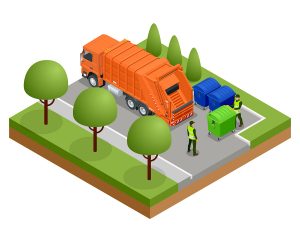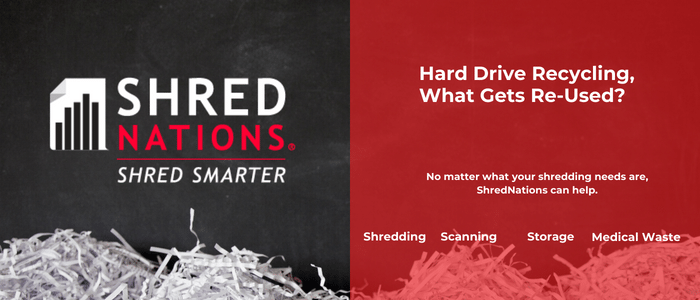
It is important for any business to protect sensitive or confidential data. While electronic information is already covered by privacy laws like HIPAA and FACTA, no less care should be taken when dealing with the hardware that contains that information. Hard drive shredding provides the best way to permanently destroy sensitive data.
Depending on the methods you use when retiring old hard drives, your data could still be at risk. Many people buy used computers just to see what they can recover from the hard drive.
This is because common methods like overwriting, reformatting, or degaussing do not fully erase the data. Special software can recover data from even the cleanest hard drives.
Starting the Process
 There are a couple of options when it’s time to shred old hard drives. Though the end result will be the same, cost and time will often make one option more suited to your needs than another.
There are a couple of options when it’s time to shred old hard drives. Though the end result will be the same, cost and time will often make one option more suited to your needs than another.
The first option is on-site shredding, where a shredding service will come to you and shred your hard drives right in front of you. Because this process takes a little more time, it can be slightly more expensive.
The second option is to drop off your hard drives at the provider’s facility. Off-site shredding is usually cheaper, but at the cost of the convenience.
Whichever option you choose, you can rest assured that your data will be securely and permanently destroyed.
Hard Drive Shredding Destruction Methods
Hard drives work by storing data on metal disks, called platters. Each platter in a hard drive is divided up into billions of little areas that can be independently magnetized or demagnetized to store the 0s and 1s that make up our data.
The best way to make sure this data is truly gone is to destroy the platters so that data recovery tools can’t access them. Hard drive shredding services use one of two methods to permanently take these platters out of commission.
Shearing
Destroying hard drives by shearing is similar to what you would expect from a household paper shredder. An industrial shredder cuts the hard drive into many small pieces or strips using 40,000 pounds of force.
Even if someone got their hands on the shredded pieces, there would be no way to put them back together.
Crushing
With this method, what is essentially a giant hole punch uses 7,500 pounds of force to put a large hole through the middle of the hard drive. The hole causes the delicate magnetic surface to ripple and deform. Just like shearing, this renders the platters useless as anything other than shiny decorations.
Hard Drive Shredding Chain of Custody
Your hard drives may changes hands several times during the shredding process, especially if you choose off-site shredding. To make sure your data stays safe along the way, there is a chain of custody—a paper trail that documents and tracks the movement of your documents or whatever else you have to shred.
There are several components to the chain of custody for secure shredding:
- Barcode Tracking: Barcodes are scanned at each touch-point to provide a record of where and when the boxes were picked up, dropped off, and shredded.
- Locking Shred Bins: For paper shredding, locked bins are provided for storing and transporting paper. The box is only opened once the shredding process starts.
- GPS Tracking: Shredding trucks are equipped with GPS tracking, allowing for real-time monitoring and location history of the truck’s routes and stops.
- 24/7 Monitoring: Shredding facilities have 24/7 video surveillance. This provides both security and proof of safe service.
Certificate of Destruction
After your hard drives are shredded, make sure you receive a certificate of destruction. These certificates contain detailed information about the destruction of your hard drives. They also prove that the process complied with all applicable laws.
Need Hard Drive Shredding?
Shred Nations partners with secure hard drive shredding services nationwide. For free, no-hassle quotes from shredding services in your area, fill out the form on the right or give us a call at (800) 747-3365.













